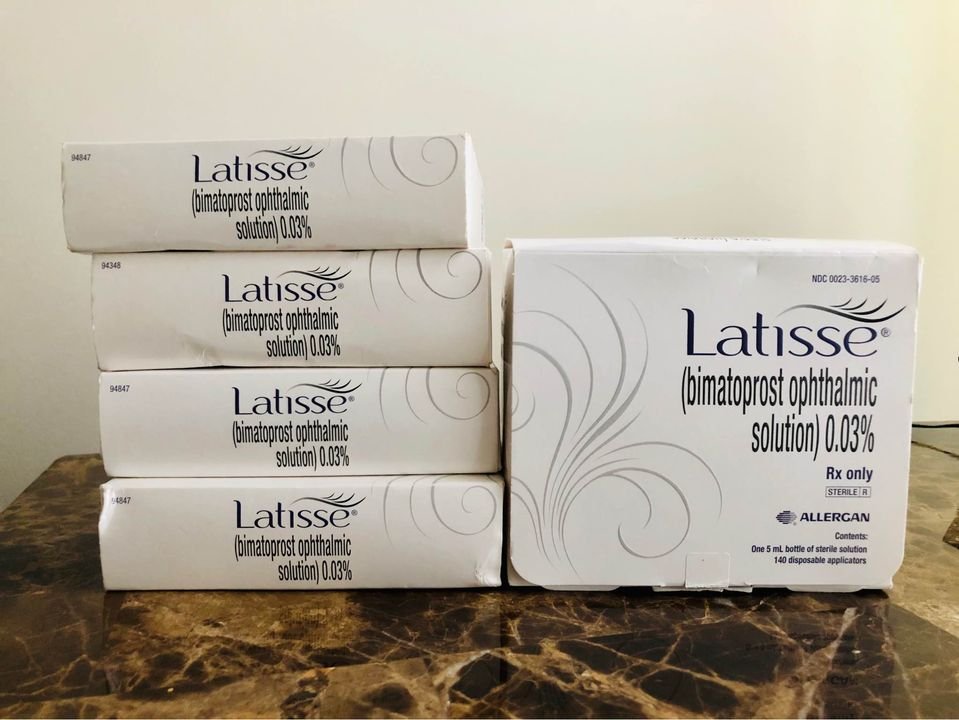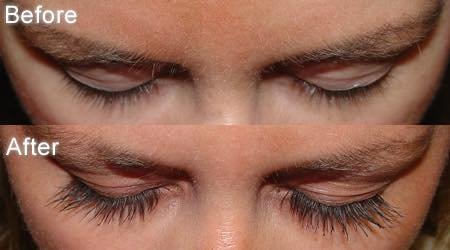So many of us are not just born with great eyelashes but not fuller, thicker, and longer lashes, and sometimes, we can’t achieve this with a single coat of mascara. Even after trying lash extensions and even eyelash growth serums, our lashes may not look as full and luscious as we desire.
However, the only solution to this is Latisse. If you are looking for an effective and safe treatment to grow and thicken your eyelashes, Latisse is the ideal option for you.
What is Latisse?

Latisse is a growth treatment for hypotrichosis (Inadequate or not enough eyelashes). It is an FDA-approved treatment used to grow lashes and is specially made for people who have difficulty growing hair around the eye or people who have sparse lashes or are experiencing loss of lashes due to stress or illness.
Latisse was first created by Allergan in 2001 when Allergan developed a medicated eye drop to treat elevated intraocular pressure. Many patients started using the medication and grew longer and fuller lashes as a side effect.
As a result of this, Allergan studied the medication’s active ingredient, which is bimatoprost. After a clinical test, Latisse was approved by the FDA in December 2008 and reformulated for eyelash growth. The active ingredients in Latisse mimic the natural chemical within our body that stimulates our eyelashes’ hair growth and assists people with a deficiency in prostaglandin.
You might want to check out: Lash Boost vs Latisse
How Does Latisse Work?
Latisse extends the growth phase and increases the number of hairs that tend to grow. It is applied by dabbing the formula along the upper lash line every night with one of the sterile applicators supplied. Before applying, you must ensure that your face is clean and the makeup and contact lenses removed.
Proceed to remove an applicator from its tray, then hold a sterile applicator horizontally and place one drop of Latisse on the applicator’s area closest to the tip but not on the tip. Proceed to draw the applicator carefully across the skin of the upper eyelid margin at the base of the eyelashes where the eyelashes meet the skin.
Always remember that each applicator needs to be thrown away after use, and re-using applicators can cause problems such as an eye infection or an allergic reaction. After this, you may begin to see results after about two months.
Do not apply Latisse in your eye or on the lower eyelid. Also, do not allow the tip of the bottle or applicator to come in contact with the fingers to avoid contamination that can cause infections.
Latisse Before And After – What To Expect

Latisse causes your eyelashes to grow longer and thicker by increasing the growth phase of eyelash hair follicles. However, just like every other beauty treatment, you can have different results depending on your body in terms of thickness, the direction of the eyelash growth, or the darkening of the eyelids.
Latisse can also be applied only on the skin of the upper eyelid margin at the base of the eyelashes and is unsuitable for lower lashes. The application is made with a single-use disposable applicator brush.
Moreover, changes can occur in 4-6 weeks, and the eyelashes can go back to pre-treatment length in several weeks or months after you stop using Latisse. To get the best result while using Latisse, it is advisable to incorporate it into your nightly routine by keeping it beside your face wash and moisturizers.
How to Apply Latisse
Since Latisse is a chemical makeup, it can cause inflammation around the eyelid skin, so it is always recommended to use the applicator carefully and avoid using too much quantity on the eyelid area. Below are steps on how to apply Latisse.
You might want to check out: How To Apply Rodan and Fields Lash Boost
Step One
Before applying, ensure your face is clean and free of makeup and dirt. Use a makeup remover wipe to remove the makeup on your face. Also, take your contacts off if you have them on to avoid contamination.
Step Two
Remove an applicator from its tray and hold it horizontally. Ensure to hold it by the end without the bristles and keep your fingers away from the applicator end to prevent any possible bacterial infections.
Step Three
Apply Latisse to the skin using an applicator at the base of the upper lashes going from the inner part to the outer line of your lash line. Do not apply to the bottom lashes; the application should be made only at night, before bed.
Step Four
Wipe off any excess on your skin. When Latisse comes in contact with your skin, excess hair can start growing in place, so if you do not wipe off the excess, it can spread to other areas of the face.
Step Five
Dispose of the applicator after a single use. Repeat the process for the other eye using a new applicator. Note that your contact lenses may be reinserted 15 minutes after application. However, if you stop using Latisse, your lashes will gradually return to how they were before.
Possible Side Effects Of Latisse
Since Latisse is a prescription product, you need to schedule a consultation with your Ophthalmologist to know whether it is right for you. Moreover, while Latisse is highly safe, you must be aware of a few possible side effects.
The worst part is that you may not be a candidate for Latisse if you have severe allergies or skin infections of the upper eyelids. If you are a pregnant or nursing mother, you are advised to stay away from Latisse, likewise those with Ureitis or Conjunctivitis. Some of the common side effects include;
- Eye discomfort
- Dryness
- Itching or watery eyes
- Brown discoloration of the colored part of the eye.
To prevent these side effects, here are a few instructions you can follow,
- Discuss any eye issues with your doctor before starting any treatment.
- Do not apply in the eye or any other part of the eye; the application should be made only at the root of the upper lashes.
- Use Latisse as a part of your nighttime routine.
How Long Can You Use Latisse For?
Although Latisse is a great product that can make your eyelashes, no studies suggest Latisse is harmful to eyelashes for prolonged use. Once the desired result is reached, using Latisse each night won’t be necessary.
You may use it thrice a week to maintain and darken the lashes. However, as long as you do not experience any of the Latisse side effects and you are using the formula as prescribed, you should be able to continue using Latisse for a long time.
You might want to check out: How Long Does A Lash Lift And Tint Last?
Why Can’t You Put Latisse On Your Lower Lashes?
Dermatologists do not recommend using Latisse on lower lashes because it may cause excess hair growth in unwanted areas. For desired results, apply Latisse only on your upper lash line.
When you apply it and blink your eyes, a small amount will get onto your lower lashes. However, it can cause skin hyperpigmentation, so only place a minimum effective dose on your lashes and avoid the large areas of your eyelid skin.
Can Latisse Make Your Eyelashes Fall Out?
In most cases, Latisse works to increase hair growth and thickness, but in other cases, it can cause the lashes to fall out. Moreover, if you are experiencing adverse reactions to the product, it’s advisable to stop using it.
